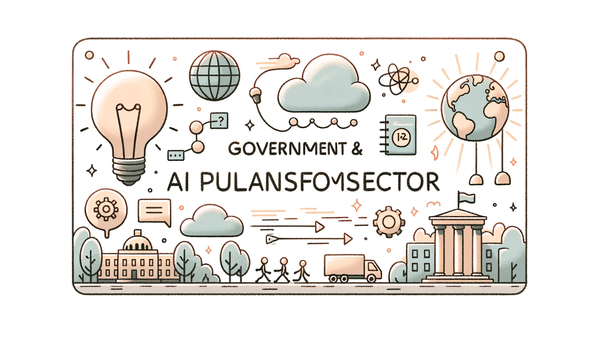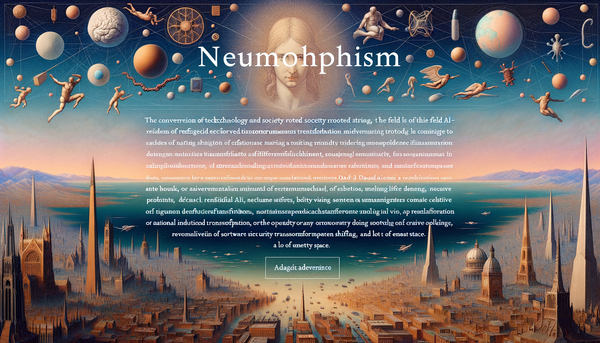AI Innovations and Challenges: A Comprehensive Overview
Urban innovation merges with technological breakthroughs as AI drives transformative investments, reshapes legal landscapes, reinvents high-performance hardware, deciphers ancestral stories, and redefines telecom networks—each facet contributing to a dynamic shift in the way our society and industries operate.
Urban Transformation and the Chicago Quantum Corridor
The Chicago Quantum Corridor is a prime example of how advanced technologies can spur neighborhood revitalization and economic growth. Once primarily recognized for its industrial roots, the city is metamorphosing into a vibrant tech hub where AI research and quantum computing initiatives meet community development. Local leaders and academic institutions are collaborating to forge a creative nexus that integrates public infrastructure with futuristic technology.
This corridor not only symbolizes a physical transformation in urban spaces but also a paradigm shift in how technology is envisioned as a catalyst for societal change. The infusion of AI into urban planning is creating smarter energy systems, sustainable transportation channels, and digital governance models that ensure community services are both efficient and inclusive. When projects like this come to life, they serve as a blueprint for other cities. They inspire policy makers and civic tech enthusiasts, all while linking back to broader conversations on AI governance, such as those detailed in our discussion on AI Governance, Development, and Impact.
"AI will impact every industry on Earth, including manufacturing, agriculture, health care, and more." – Fei-Fei Li, The Quest for Artificial Intelligence
This initiative serves as both a scientific experiment and a social experiment. As researchers and community organizers come together, they are laying the foundation for interconnected communities where breakthroughs in quantum and artificial intelligence ultimately lead to a better quality of life.
Honor's Bold $10 Billion Investment: Beyond a Phone Maker
In a move that reverberated across global markets, Honor, the company once solely recognized for its mobile devices, has pledged an astonishing $10 billion for advancing AI technologies. This announcement highlights a broader trend where traditional tech companies are reinventing themselves by investing heavily in the development of AI capabilities.
This significant capital infusion is aimed at integrating AI into various aspects of Honor's product and service ecosystem—from voice assistants and predictive algorithms to innovative user interfaces that harness machine learning for enhanced interactions. The decision to channel such vast resources into AI signals a long-term commitment to innovation, marking Honor’s transition from merely manufacturing phones to becoming a key player in the burgeoning AI economy.
Historically, major technological shifts have often been accompanied by significant capital expenditures. For example, when the computer revolution began, companies that invested in research and development reaped exponential benefits. Similarly, Honor's bold investment strategy positions it to not only compete with but potentially surpass some of the entrenched technology giants. This investment is not made in isolation; rather, it fits within a broader narrative that we are witnessing across industries, as highlighted in our feature on Cloud Expansion and AI Innovations.
By placing its bet on the transformative power of AI, Honor is also crafting a roadmap for industry-wide shifts—promoting greater accessibility and affordability in cutting-edge AI solutions. The ripple effect of such a move is expected to extend to various verticals, including smart home technology, augmented reality, and next-generation communication systems.
Legal and Ethical Challenges: Montana's Proposed Legislation on AI Deepfakes
In Montana, lawmakers are now navigating the challenging maze of digital ethics and legal frameworks by considering legislation that would criminalize sexually explicit AI deepfakes. This controversial move aims to preempt and mitigate the potential societal harms associated with sophisticated AI manipulations that can blur the lines of truth and consent.
The legislative proposal reflects growing public concern about the misuse of deep learning technologies, which not only distort digital identities but also pose significant threats to personal privacy and reputation. In a world where digital representations can be effortlessly altered, establishing legal safeguards becomes imperative. This development parallels the ongoing discourse on digital rights and intellectual property issues—subjects we discuss further in our coverage of Copyright Challenges in AI Training.
Critics argue that such laws, if too draconian, might stifle creative expression and innovation in synthetic media. Yet, proponents contend that clear-cut legal frameworks are essential in a digital era where the misuse of technology could lead to irreversible personal and societal harm. The balance between safeguarding individual rights and fostering innovation is delicate, but essential for paving the way for responsible AI development.
Drawing from historical parallels, the debate around censorship and free speech has been a recurring theme in democratic societies. The Montana proposal, in this context, emerges as a modern iteration of an age-old discussion, displaying the tension between progressive technological advancements and the preservation of civil liberties. As this situation evolves, stakeholders from various sectors will be closely monitoring how such legal measures influence not only the trajectory of AI development but also societal norms at large.
The Crossroads of Hardware Innovation: AMD Radeon and the Quest for Affordable AI Performance
While the conversation in AI frequently revolves around algorithms and ethical implications, hardware remains a key foundation upon which these technologies are built. AMD’s recent unveiling of the Radeon RX 9070 and its closely watched cousin, the anticipated RX 9060, represents a significant moment in the hardware space. With a projected price tag that could redefine value in the GPU market, AMD is poised to challenge its competitors in a market traditionally dominated by Nvidia and Intel.
The RX 9070 XT, which already boasts impressive performance metrics and a competitive price, has set the stage for a potential revolution in affordable, high-performance graphics. Rumors and leaks suggest that the upcoming RX 9060 XT might hit the market with a price under $400, making it an attractive option for budget-conscious PC gamers. While these GPUs are primarily designed for gaming, they are equally significant in the AI domain since high-performance computational capacities are essential for AI training and inference tasks.
The interplay between affordable GPUs and AI development is not a coincidence. As AI models become increasingly complex, the demand for cost-effective yet powerful computing resources grows. AMD's strategic advancements could democratize access to high-performance AI systems, enabling startups and academic institutions to harness advanced computing power without the prohibitive costs typically associated with flagship GPUs.
Historically, innovations in hardware have often spurred growth in software and digital innovations. It reminds one of the computer revolution beginning decades ago when new microprocessor architectures transformed entire industries. AMD’s aggressive pricing and performance enhancements not only aim to disrupt the gaming market but also bolster AI-related computations—a key aspect underscored in our analysis of Technological Innovations and Challenges in AI.
This hardware revolution is a testament to the symbiotic relationship between accessible technology and scalable AI solutions. As GPUs become more affordable and efficient, the barrier to entry for advanced AI research continues to lower, fostering a more inclusive ecosystem of innovation and creativity.
Genealogy and AI: Unearthing the Past with Cutting-Edge Technology
The intersection of artificial intelligence and genealogy opens up fascinating avenues for personal discovery and historical research. By applying AI algorithms to vast amounts of genealogical data, experts are now able to unearth intricate patterns that may have remained hidden in traditional research methods. This confluence of modern technology with ancient family histories is revolutionizing the way individuals trace their roots.
AI-driven solutions in genealogy work by analyzing historical records, genetic data, and demographic trends to provide insights that were once considered the realm of speculation. Researchers are now leveraging machine learning to predict genetic conditions, migration patterns, and even socio-cultural trends that shaped the communities of yesteryear. These advancements not only help individuals reconnect with their heritage but also contribute to our broader understanding of history.
For instance, a person exploring their ancestry may uncover links to historical events or regions previously unknown to them thanks to AI’s pattern recognition capabilities. This technology-driven exploration is reminiscent of detective work in classic literature, where every clue leads to a broader revelation. Much like uncovering a family secret in a suspenseful narrative, AI enables genealogists to piece together fragmented historical records, creating a rich tapestry of our collective past.
This convergence of AI and genealogy also points to a more comprehensive view of human history—one that respects the complexity and interrelatedness of societal developments. It reminds us of how technological advancement can serve as the key that unlocks the door to our shared heritage, enriching cultural identity and self-awareness.
Revolutionizing Telecom and B2B Innovations: Insights from MWC 2025
Mobile World Congress (MWC) 2025 in Barcelona provided a bustling platform for unveiling innovations across the telecom and B2B sectors. The conference showcased groundbreaking partnerships and technology demonstrations that underscored the central role of AI in modern communications. Notably, Nokia’s strategic alliances with partners like Nvidia, Softbank, and T-Mobile to enhance AI-powered Radio Access Networks (AI-RAN) mark a significant milestone in the telecommunications revolution.
The integration of AI into telecom networks is proving transformative, promising enhancements in data processing, network optimization, and operational efficiency. AI-driven analytics enable service providers to manage vast and complex networks with precision, detecting and rectifying operational anomalies in real time. Furthermore, initiatives showcased by Vodafone and IBM, including prototypes for quantum-safe mobile security, highlight a trend towards marrying traditional telecom infrastructure with futuristic technologies.
Beyond these technological innovations, MWC 2025 also accentuated the importance of collaborations across industries. Microsoft’s introduction of a tailored data model for telecommunications exemplifies how cross-industry synergies can drive innovation. These developments are vital in addressing the ever-growing demand for connectivity and digital services—a topic that echoes the issues discussed in our previous overview of Cloud Expansion and AI Innovation.
The industry is clearly moving towards a future where AI and smart networks coalesce to create more resilient, secure, and efficient communications. As B2B companies recalibrate their strategies to align with these innovations, the telecom sector is poised for exponential growth, reshaping how businesses and consumers alike experience connectivity.
Exploring Workplace Perceptions: Reflecting on AI and Gender Dynamics
In an era where AI is reshaping every facet of our professional environments, it is important to consider how these technological advances are perceived across different demographic groups. An intriguing narrative surfaces around the voting of trust and skepticism, particularly among female employees. Although detailed accounts remain sparse, the underlying question remains: How do different segments of the workforce feel about the pervasive integration of AI in everyday operations?
The concern, as echoed in discussions found in various digital outlets, is not necessarily about the technology's efficacy but rather its implications for workplace dynamics, job security, and ethical considerations. It is essential for companies to foster transparency and provide comprehensive training, ensuring that employees across all genders understand the capabilities and limitations of AI systems.
Creating an inclusive environment where everyone's perspective is valued can drive not only fairness but also innovation. When team members feel empowered to discuss and critique new technologies, organizations are better positioned to harness the full potential of AI. This sentiment of inclusive development aligns with broader discussions on ethical AI practices and diversity in tech leadership.
"AI will be the most transformative technology since electricity." – Eric Schmidt, The Age of AI: And Our Human Future
By addressing any reservations head-on and creating channels for dialogue, companies can leverage diverse perspectives to build more robust, fair, and ethically sound AI systems. This approach will ultimately contribute to a richer, more dynamic work environment where innovation thrives.
Looking Ahead: AI’s Multifaceted Impacts and Future Potential
As we cast our gaze towards the horizon, the collective narratives from urban transformation, bold investments, legal challenges, hardware innovations, genealogical research, telecom revolutions, and workplace dynamics weave together to form a comprehensive tapestry of AI’s influence on our contemporary society. The story of AI is not monolithic; rather, it is an ever-evolving saga that simultaneously shapes and is shaped by various societal forces.
Each strand—be it the transformative power of neighborhood initiatives like the Chicago Quantum Corridor, the bold monetary bets by corporate giants like Honor, or the critical legal and ethical debates emerging in legislative halls—adds nuance to our understanding of technological progress. These diverse stories remind us that while AI is a tool of immense potential, it is up to us as a society to harness it responsibly and creatively.
Moreover, the convergence of advanced hardware, such as AMD's innovative GPUs, with sophisticated algorithms illustrates the dual importance of both physical and digital infrastructure in pushing the bounds of what is possible. AI is not merely about faster computations or more complex data models; it is about the broader impact on human lives, communities, and the very fabric of our social interactions.
Historically, revolutionary breakthroughs in science and technology have been accompanied by societal shifts. Today’s AI revolution is no exception, echoing the transformative eras of past industrial and digital revolutions. As researchers, developers, and policymakers navigate these exciting yet challenging times, there is a collective responsibility to ensure that progress does not come at the expense of ethical considerations or social equity.
This ongoing narrative is enriched by various perspectives across industries and communities. As more voices join the conversation around AI governance, regulation, and innovation, it becomes increasingly clear that the future of technology is inherently collaborative. The synergy between public policy, corporate strategy, and grassroots innovation will ultimately decide how AI integrates into our daily lives, shaping a future that is both promising and conscientious.
Looking forward, continuous engagement with the multidimensional aspects of AI—from ethical guidelines in legislatures to budget-friendly GPU innovations fostering accessible research—will be crucial. The conversation extends beyond technical specifications, emphasizing the need for a balanced approach that considers cultural, social, and economic dimensions.




